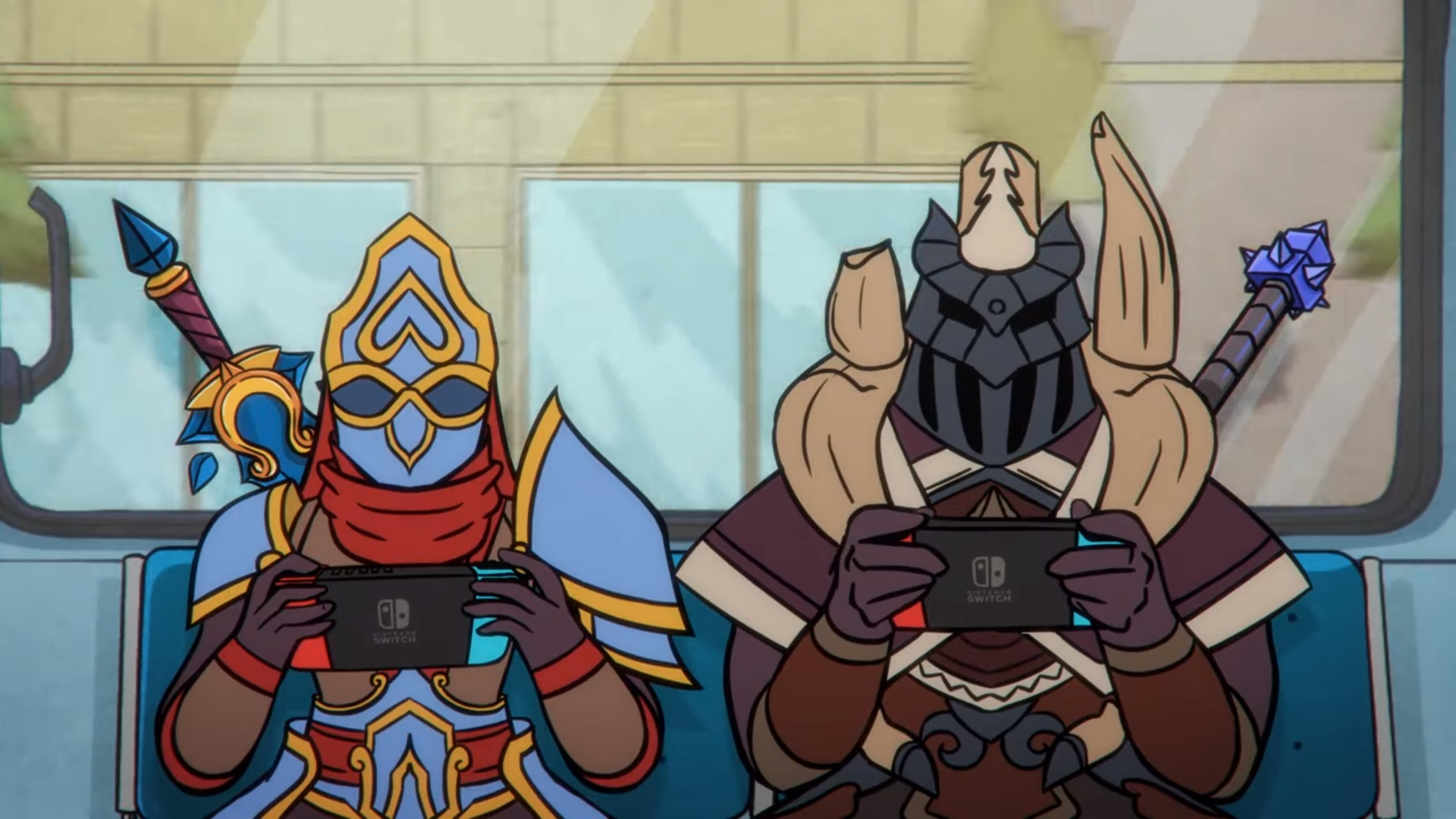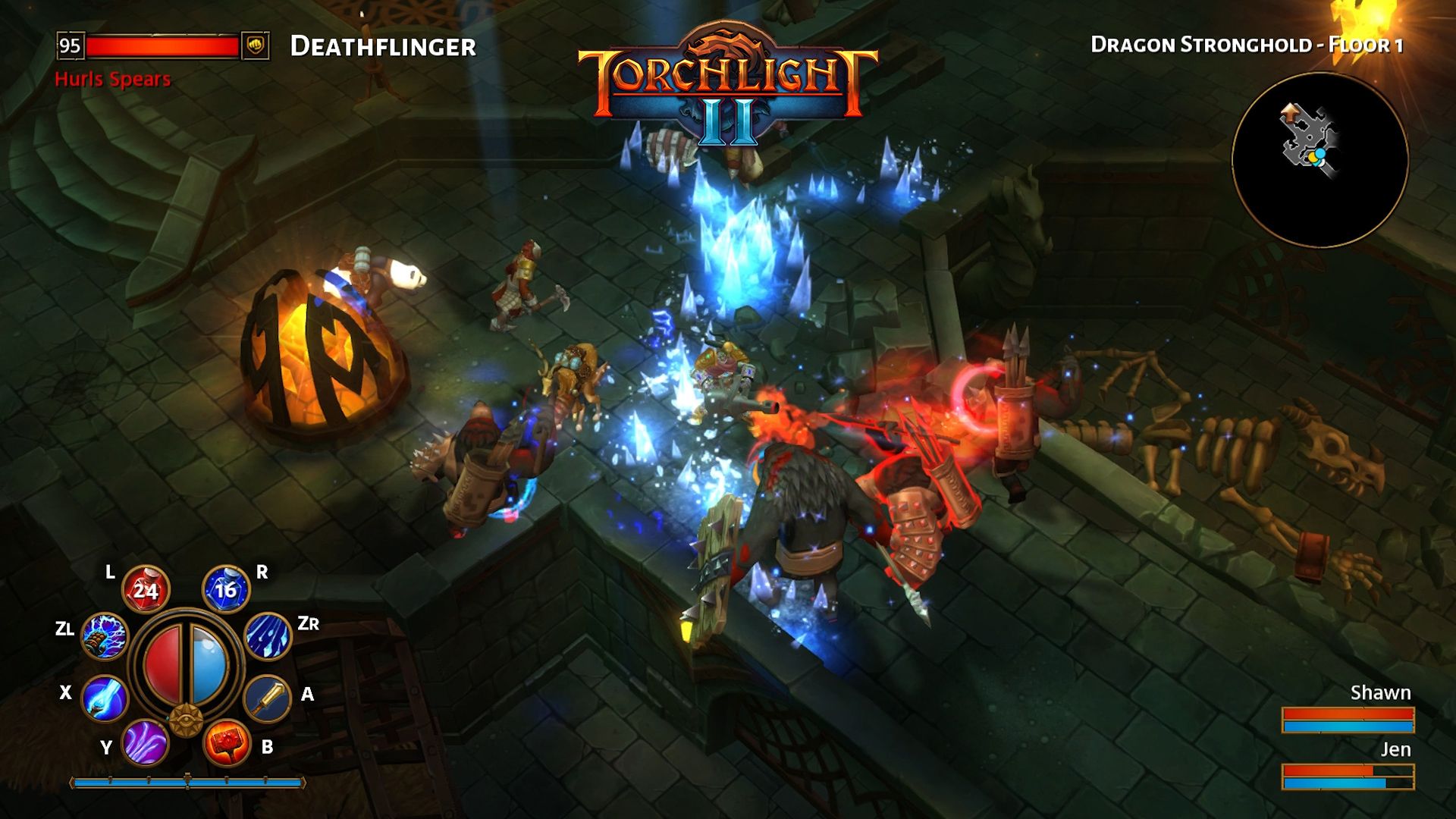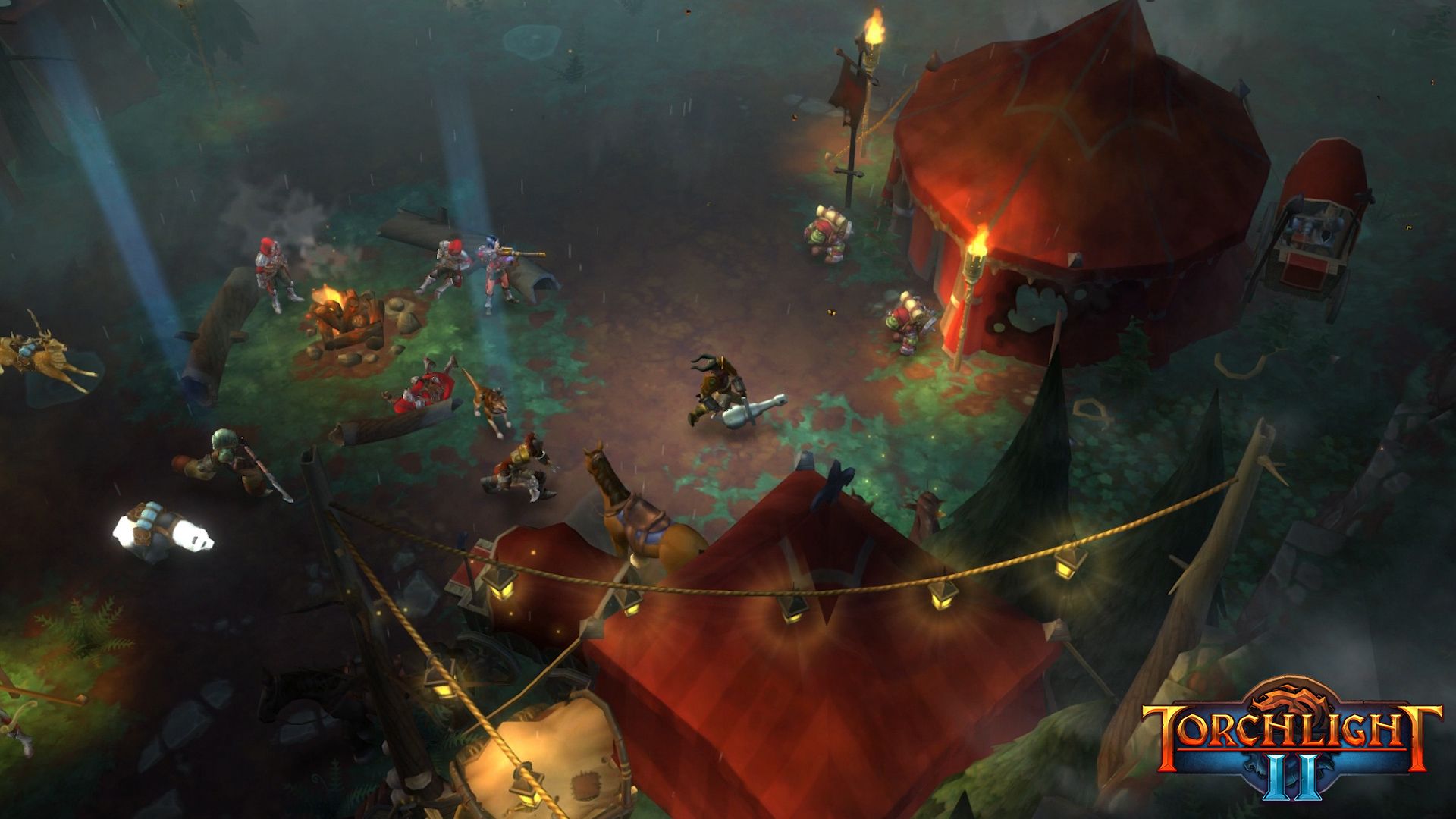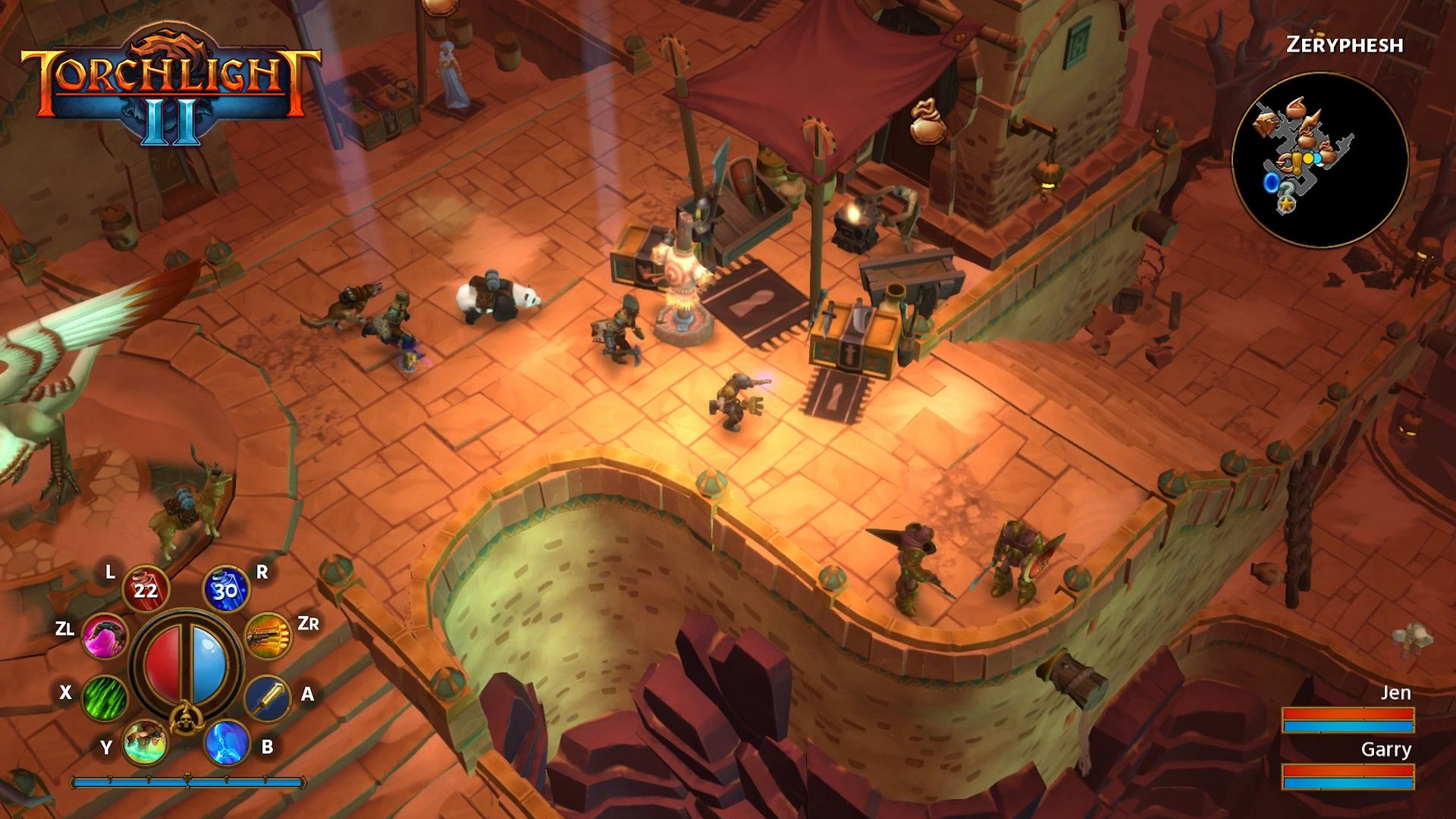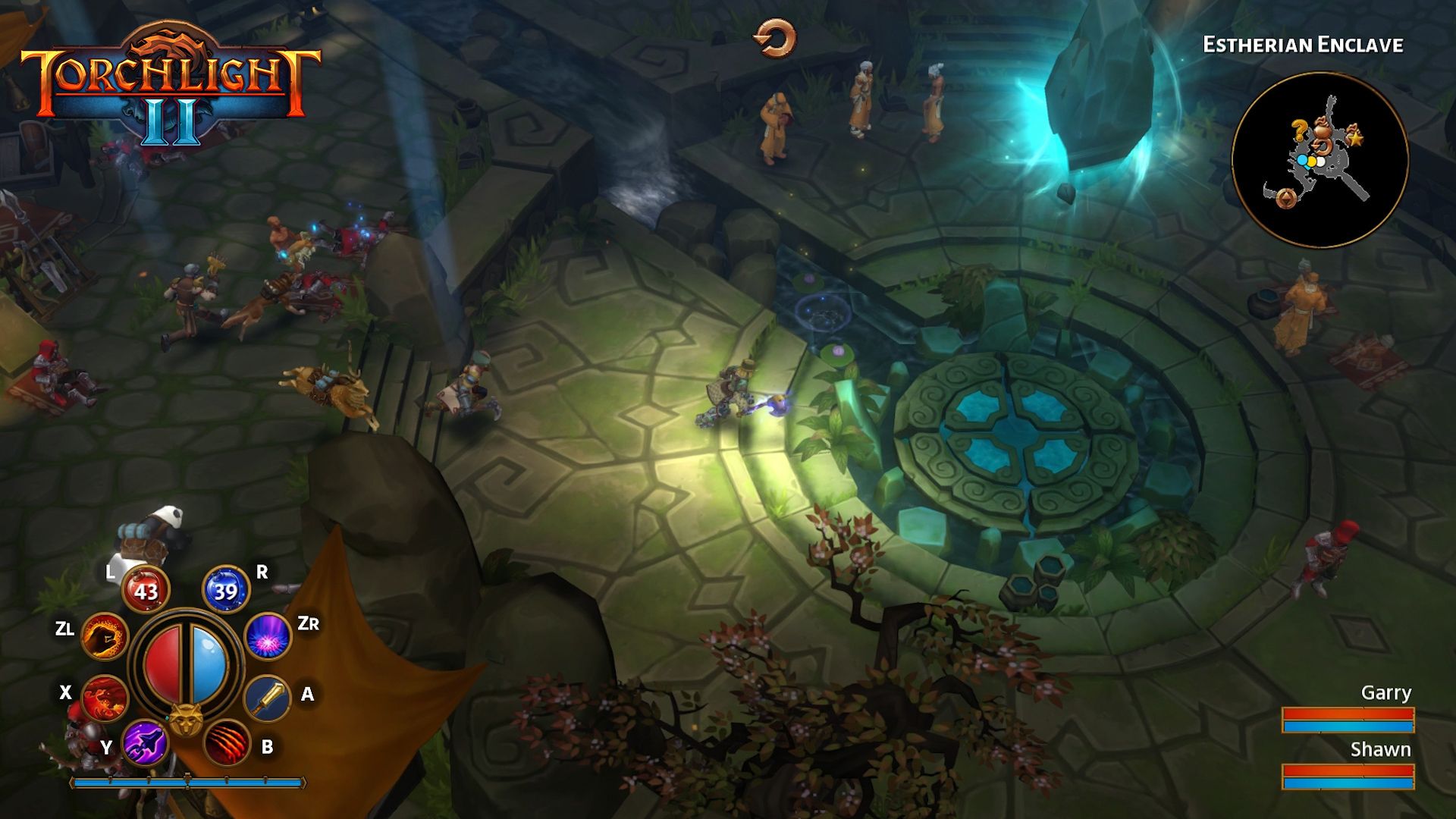Panic Button is a developer that has been nearly synonymous with Nintendo Switch since 2017. Thanks to their impressive ports of Doom and Rocket League in the system's first year, the developer has been able to continually create solid Nintendo Switch ports for everything from Warframe to the upcoming Doom Eternal. Earlier this year, they partnered with Perfect World Entertainment to not only bring Hob to Nintendo Switch, but Torchlight II to all consoles as well.
Ahead of the release of the cult classic RPG on PS4, Xbox One, and Nintendo Switch, DualShockers was able to talk with Panic Button Co-Owner and Technical Director Andy Boggs. Over the course of our discussion we touched on the creation of this Torchlight II port for all systems and dived into what makes a port enticing to work on, Google Stadia, and where Panic Button hopes to go as a studio in the future.
Tomas Franzese: What are the main elements that attract Panic Button to working on a port like Torchlight II?
Andy Boggs: I think the main thing is if it’s a game that people at the studio are going to be excited about it. A lot of our games that are really successful become passion projects for the people that are working here. We had so many people that, even before we started doing the project, were still regularly playing Torchlight II. Before we were even talking with Perfect World about doing the project, they were saying ‘Man, I can’t believe that somebody hasn’t ported Torchlight II to consoles or to the Switch.’ Another main thing is if we think that it’ll be an interesting technical challenge because we have a lot of people that like that type of thing. And then, is it a game that we would want to see on the consoles?
[pullquote]"A lot of our games that are really successful become passion projects for the people that are working here."[/pullquote]
TF: So if you get an offer for a game that the studio isn't familiar with, do you usually not take it?
AB: Generally, if it’s a game we aren’t familiar with we’ll take the time to get familiar with it. There are some situations where even if it’s not a game we have this pre-existing love for, if we think it’s an interesting challenge or it tells and interesting story about our studio we might be be more likely to take it. Definitely, having a game that people are already passionate about is a huge driver for the projects we choose to take on.
TF: Do you have a personal connection to Torchlight II?
AB: I didn’t have personal connection to Torchlight II other than having played it on Steam for years, but I had done some work a while back on Hob with the Runic team. I helped them do optimization for PS4. Going up to their studio several times and seeing the legacy of Torchlight II, a lot of the people who worked on it, how passionate about it they still were at the studio, and them being so welcoming and making me feel like part of the team made me more inclined to see that game continue on and come to consoles.
TF: When going about creating a console port, what are the first areas of the game a team at Panic Button focuses on?
AB: Especially with a game that’s coming from PC, the big thing we’re looking at is how do we make this feel natural on a gamepad, how do we make the UI feel natural. Then, with Torchlight being several years old, the other thing was if there was anything else we could do to bring this up to feeling more like a modern game. A lot of the things with Torchlight were that we realized very quickly that we can’t just tweak the UI or modify the controls a bit to make it feel good. We had to scrap all of the UI, we had to scrap all of the controls and start from scratch. Then, how does Torchlight go from being very PC like in how you do your multiplayer to feeling more like a game with matchmaking and feeling like an experience you’d expect on consoles with a multiplayer game.
TF: During the porting process, how does Panic Button balance directly porting it over and taking some creative liberties on the game?
AB: We actually have a big discussion on that. With anything we add, we think about if we are changing the original design intent of this game or if this feature just happened to work like this but the soul of the game isn’t really tied to this feature. Generally, what we want to do if we are bringing a game to a new console, or from PC to consoles, we want it to feel like it was always meant to go there. We don’t want a person playing this game to be like ‘Wow, this really feel like this belongs or a PC or belongs on a different console.” It’s really about how can we take advantage of the platform it’s coming to with platform specific features like with achievements, or gamepad vibration, or unique network ecosystems like Xbox Live, PSN, or Nintendo Switch Online and just make it feel like a natural fit because that is the most key thing to us.
TF: What are the most common challenges Panic Button runs into when porting games to Switch?
AB: Power, for one, because the Switch is a handheld console so it doesn’t have as much horsepower as some of the other consoles or PC. We have to think about how we can translate this and optimize this and get it performing at a frame rate that is acceptable. The other thing is the UI. Is this game going to be legible on a six inch screen and is the UI going to be a problem because people can’t read? You already hear about so many games where even on a big screen the text is too small to read. One of the things we concern ourselves with is if it is going to be too hard to read on a smaller screen. There are other features like achievements that the Switch doesn’t do that we have to consider if we write our own version of it for this game or just leave it to the other console ecosystems.
TF: How long has this Torchlight II port been in development?
AB: I think we started in earnest in November last year, so we’re coming up just shy of a year.
TF: Is this the typical length for the porting process?
AB: It's usually somewhere around there. It’s rare for us to take more than a year to do something.
[pullquote]"If users find areas that are too small to read on the smaller screen we would probably look at doing an [Nintendo Switch Lite] update for those."[/pullquote]
TF: How has Panic Button and Perfect World Entertainment’s relationship evolved between the first work on Hob back in 2016 and now?
AB: Initially, we were just getting to know each other. We’re trying to see how they work, and whenever you are developing a relationship with a publisher there’s really a lot to figure out in terms of what’s important to them, what’s important to us, and how we are going to respond to each other if one party runs into problems. After we had done Hob for the PS4 and then after we had done Hob for Switch, we’re now at a place where we really like working with each other, we really know that the other party has our back with the things we want to work on. Now, it’s less of a ‘Hey, do we want to work with these guys?’ and more of a ‘What can we do together?’ and exploring every opportunity we can with the publisher.
TF: An updated version of the basic Switch model is rolling out this month, and the Nintendo Switch Lite is releasing in September. Did Panic Button take these new hardware iterations into account when working on the Torchlight II port for Nintendo Switch?
AB: Our UI redesign, which would be the biggest thing that [Nintendo Switch Lite] would affect, we had to do that pretty early on, as you can imagine. We didn’t know what the exact specs would be at the time that we did that, but we did know that we wanted to maximize what the UI can look like on these smaller screens. We have had the chance to visualize what that’s going to look like on the smaller handheld. In a patch we may go back, and if users find areas that are too small to read on the smaller screen we would probably look at doing an update for those. So far though, it looks really good and it’s still really playable even on the smaller screen.
TF: While Panic Button has really made a name for itself with the more recent Switch ports, you’ve been around for a long time and worked on everything from WiiWare games to Star Wars Kinect. Does Panic Button like being branded as a Switch port developer, or is it a stigma you want to break out of?
AB: For a long time, we had a reputation in Austin for being a really technically proficient shop. So even when we were doing things like the WiiWare games, even back then we were still going and helping other studios firefight when they ran into technical problems. I think getting recognition for a real strength of our has been fantastic. Going forward, I do want us, not just me but the entire studio, wants to be know for more than just ports and our technical ability. We want to be known for our great artwork, and our great design, and our full studio capabilities. It’s not that we want to get away from doing ports, we really love the technical challenge of it, but we do just want to expand what we’re known for.
TF: Even though the Switch still has a healthy lifespan ahead of it, do you really see the studio achieving that once support for the console starts waning?
AB: I think we definitely want to move in that direction regardless, but in terms of what our plan is with the next console generation and with the Switch’s future, the Switch is still going very strong so we have no plans to shift away from that. I do think that we’ll really figure out what our trajectory is for the next console generation in the next year or so. Right now, it’s too hard to say.
TF: As a developer that specializes in porting, what are your thoughts on cloud-based platforms like Google Stadia?
AB: I think it’s really interesting. I’ve had a chance to demo it back when they did the Project Stream thing. I spent a lot of time with that Assassin’s Creed Odyssey demo. I think it’s fascinating and I think I could eventually see the industry going that way, and I’m really curious to see what publishers' perception of Stadia is going to be. As far as what the porting process to that is going to look like, I think that there will still be a demand for developers that are focused on other platforms to move their games to that, and I don’t think we’re at the point where it is so easy that they can always do it by themselves.
I think that there will still be a demand for people like us to come in and help with that from a technical perspective. I also think that the challenges will be different. A lot of what we do is performance optimization and things like that where with Stadia, because it’s running on these cloud servers, I think there’s less of a demand to focus on reducing graphics per millisecond and all of that. I think it just changes what the challenges are.
TF: Is there anything else you would like DualShockers' audience to know about Panic Button's PS4, Xbox One, and Nintendo Switch ports of Torchlight II?
AB: I just think it has been a long time coming for Torchlight II to be on consoles and be on the Switch specifically. We’ve always said that Torchlight feels like a Nintendo game and we really are excited for people to get it and see what they’ve been missing out on for all the years that it hasn’t been on consoles.
Panic Button and Perfect World Entertainment's Torchlight II ports for PS4, Xbox One, and Nintendo Switch are all available now.

